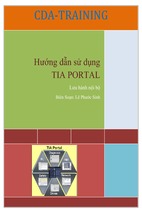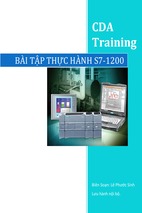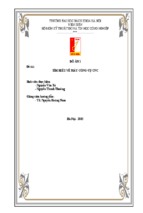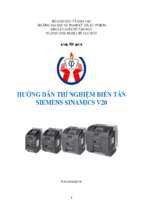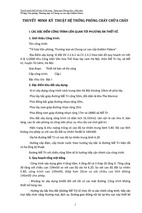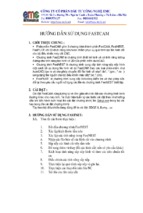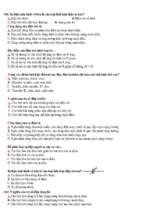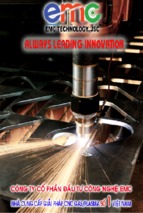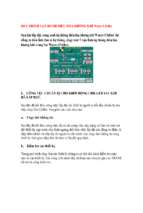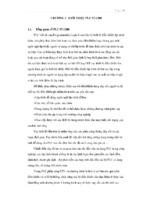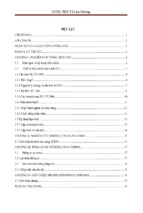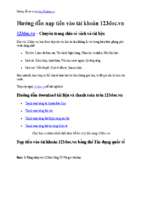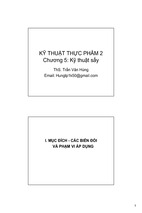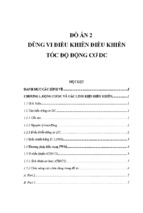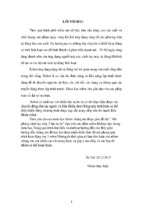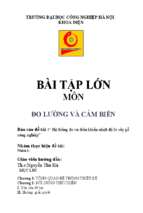Mô tả:
ADVANCED MANUFACTURING
ENGINEERING
9: Sheet Metal Forming Processes
December 2016
2
Bending Sheets, Plates, and Tubes
• Bending is a common industrial forming operation
• Outer fibers are in tension, while the inner in compression
• Outer region is longer than inner region
3
Bending Sheets, Plates, and Tubes
4
Bending Sheets, Plates, and Tubes
5
Bending Sheets, Plates, and Tubes
• Exercise
• A steel sheet metal is bent to a radius of 15 mm. Its
thickness is t=0.1 mm.
• Assuming that its yield stress is 250MPa,
• (a) calculate the radius of the part after it is bent.
• (b)Find the springback factor if (E=200 GPa)
6
Deep Drawing
• Parts are made by having punch forces on a flat sheet-metal blank
into a die cavity, a process called deep drawing
• Also used to make parts that are shallow or have moderate depth
• A round sheet-metal blank is placed over a circular die opening and is
held in place with a blankholder
7
Deep Drawing: Deep Drawability
• Failure results from the thinning of the cup wall under high
longitudinal tensile stresses ratio
• Deep drawability generally is expressed by the limiting
drawing ratio (LDR) as
8
Deep Drawing: Deep Drawability
• Normal Anisotropy
9
Deep Drawing: Deep Drawability
• Average Normal Anisotropy
10
Deep Drawing: Deep Drawability
11
Deep Drawing: Deep Drawability
• Earing
• In deep drawing, the edges of cups may become wavy
and the phenomenon is called earing
• Earing is caused by the planar anisotropy
• Planar anisotropy of the sheet is indicated by
12
Deep Drawing: Deep Drawability
13
Deep Drawing Practice
14
Deep Drawing
Introduction
•
•
•
•
•
Products made of sheet metals are common
Pressworking or press forming is used for general
sheet-forming operations, as they are performed on
presses using a set of dies
A sheet-metal part produced in presses is called a
stamping
Low-carbon steel has low cost and good strength and
formability characteristics
Manufacturing processes involving sheet metal are
performed at room temperature
Copyright © 2010 Pearson Education South Asia Pte Ltd
Introduction
Copyright © 2010 Pearson Education South Asia Pte Ltd
Shearing
•
•
Before a sheet-metal part is made, a blank is removed
from a large sheet by shearing
The edges are not smooth and perpendicular to the
plane of the sheet
Copyright © 2010 Pearson Education South Asia Pte Ltd
Shearing
•
Processing parameters in shearing are
1. The shape of the punch and die
2. The speed of punching
3. Lubrication
4. The clearance, c, between the punch and the die
•
•
•
When clearance increases, the zone of deformation
becomes larger and the sheared edge becomes rougher
Extent of the deformation zone
depends on the punch speed
Height, shape, and size of the
burr affect forming operations
Copyright © 2010 Pearson Education South Asia Pte Ltd
Shearing
Punch Force
•
Maximum punch force, F, can be estimated from
F 0.7TLUTS
T = sheet thickness
L = total length sheared
UTS = ultimate tensile strength of the material
•
Friction between the punch and the workpiece can
increase punch force
Copyright © 2010 Pearson Education South Asia Pte Ltd
Shearing: Shearing Operations
•
•
Punching is where the sheared slug is scrap
Blanking is where the slug is the part to be used and the rest is
scrap
Copyright © 2010 Pearson Education South Asia Pte Ltd
- Xem thêm -

